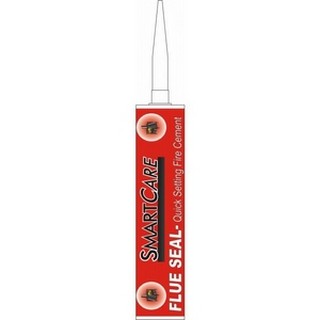Vermiculite Stove Fire Bricks (Cut to Size)
These Smartcare vermiculite fire bricks fron IQ Design can be used to replace existing vermiculite fire bricks or clay bricks. They come as a standard size 30cm x 25cm x 2.5cm and can be cut down to replace any type of old fire brick.
As fire bricks are exposed to intense heat and direct contact with burning fuel it is important to inspect them regularly for signs of wear and tear.
They will need replacing if damage to them begins to expose the stove's bodywork to flames.
There tends to be three types of stove fire bricks
1: Traditional refractory clay fire bricks
2: Heat reflecting vermiculite panels
3: Steel / cast iron fire panels.
You can extend the lifespan of cracked clay fire bricks by filling the cracks with Flue Seal High Temperature Fire Cement.
Replacing Fire Bricks
Clay bricks - When they are breaking into small fragments or crumbling.
Vermiculite panels - When they have a hollow or indentation.
Steel or cast iron panels - When holes appear in them
These Smartcare vermiculite fire bricks can be used to replace existing vermiculite fire bricks or clay bricks.
This is because the vermiculite panelling can be easily sawn and shaped with any type of wood cutting saw so that fire bricks for even the very oldest stoves can always be safely replaced.
The cast iron fire cheeks that some manufacturers use, particularly in traditional inset stoves, where space in the smaller fire chamber is at a premium, are generally thinner than vermiculite or clay firebricks and therefore should be replaced with like-for-like where possible.
Installing Firebricks
1: Generally one will have to remove the baffle plate firstly in order to remove existing fire brick as often it sits on top of the fire brick as a means to keeping it in position.
2: Clean the baffle plate and flue.
3: If stove has fire brick retaining brackets remove these also.
4: Remove fire brick carefully using a chisel or screw driver if it is difficult to dislodge.
5: Insert new fire brick using Flue Seal Fire Cement as an adhesive and reassemble.
Features and Benefits of Smartcare Fire Brick
- High temperature resistance
- Do not expand
- Low heat accumulation in lining materials
- Good thermal shock resistance
- High mechanical strength
- Good insulation capacity providing better combustion in wood burning stoves and cleaner waste gas.
- No ceramic fibres
- Non-dusting surfaces
- Non-irritant
- Odourless
- No emission of toxic gasses
- No emission of smoke or odour
- Non-combustible
- No known health hazards



have you got fire bricks in stock
Yes Terry,
We have plenty in stock. Order today and they will be delivered on Tuesday.
Colm
Purchase.ie
Temperature rating for Vermiculite Stove Fire Bricks please
It withstands temperatures up to 1000 degrees C